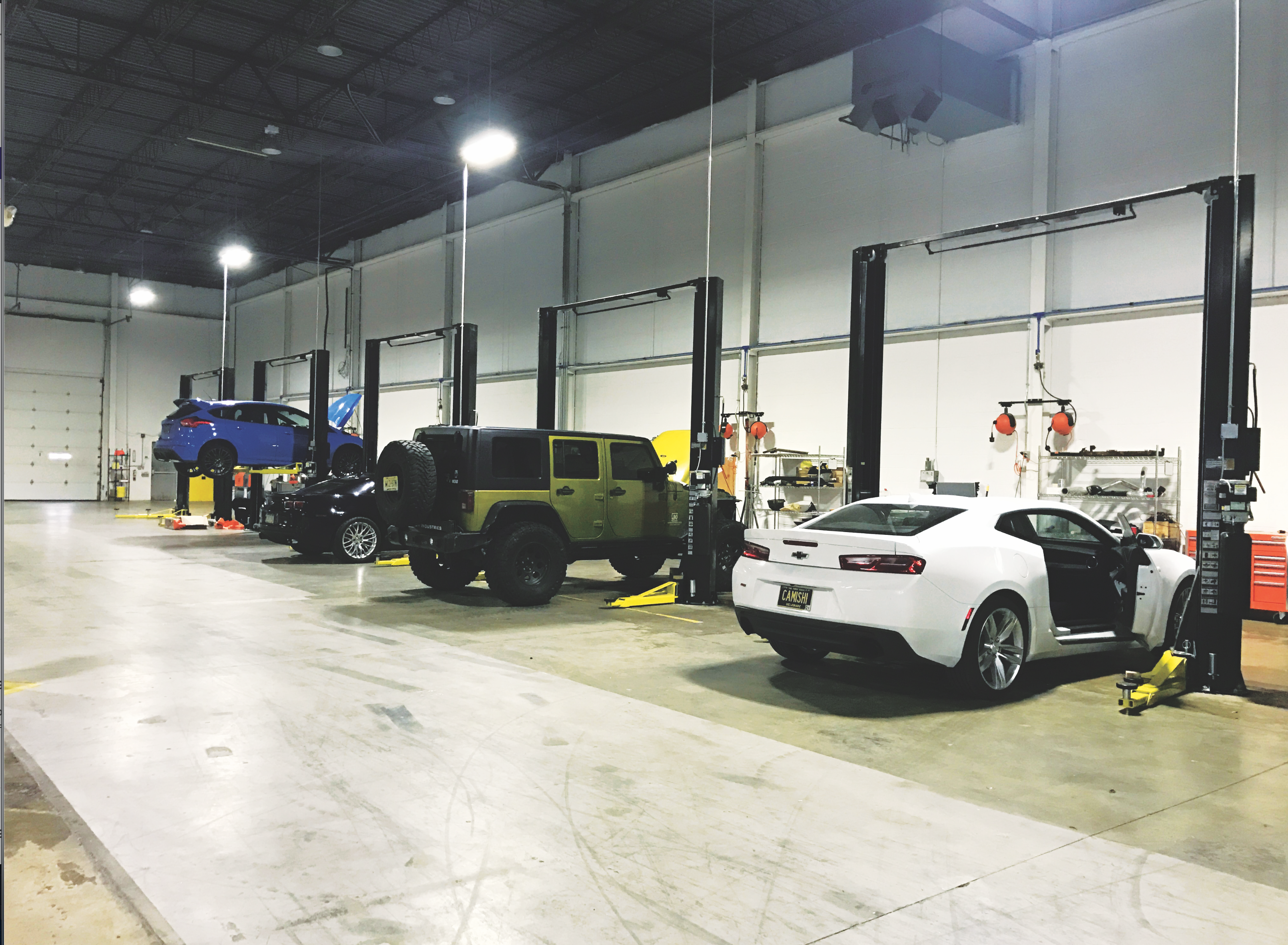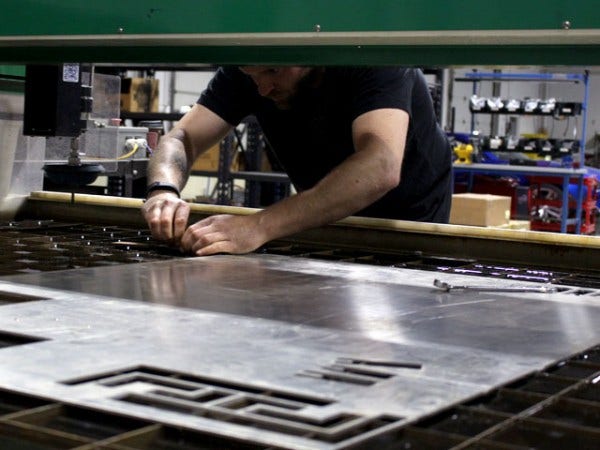
The Pieces of Equipment that Get Us Through the Day
The Mishimoto engineering facility houses top tier equipment that helps our team produce the high-quality parts you depend on. We love to use the latest tech while we work, especially if it means we can develop parts faster and save some money in the process. Take a look at five pieces of equipment that help our team in the product development process.
3D Faro Scanner
Our FARO Design ScanArm is a favorite with our team because it saves us a ton of time during development compared to the dark times before we added this piece to the R&D shop. When we have a vehicle in hand, we can scan the engine bay to get a digital representation that we can use to design new products in the digital world. This saves us loads of time so we can focus on more important things. *cough* The Mishi pups. The ScanArm also allows us to test fit early prototypes digitally instead of installing directly into the vehicle and then making manual tweaks for fitment. The ScanArm 3D scanner saves us not only time, but also the cost of materials, labor, and equipment associated with making several iterations of a prototype.


Want to learn more about our FARO Design ScanArm?
Check out our equipment profile here.
Dynojet and Dyanpack Dynamometers
We like to be transparent with our product development, testing, and results, so our dynamometers (dynos for short) help us gather the data that you want to see. Each product that we make comes with reports about HP gains and cooling improvements that we could only have gathered with the use of our dynos.

We have two dyno systems at the Mishimoto R&D facility. You might think that two dynos are overkill, but it means we can test two cars at once, which means two products are being developed at the same time. Each dyno has its own specialties too, so you'll notice that we'll test different vehicles on each.
Dynojet™ 424X - This is an inertia-only dyno that is much better suited for automatic cars and trucks. We run most of our large trucks on this dyno as well as other automatic cars.
4-pod Dynapack™ system - This is a load-capable dyno and mimics road driving, driving uphill, and towing. This dyno is better suited for manual cars and for radiator testing.
Want to learn more about our dynos?
Check out our equipment profile here.
Car lifts
It would almost be silly to have two dynos and no lifts! We have 5 car lifts in our shop which allows us to work on multiple cars at once and make easy installs. Our lifts have a capacity of 10,000 pounds to handle even our heaviest trucks. We like to make sure that the number of resources we have doesn't hold up the production of a product.


Wardjet Water Jet
Our water jet helps us tremendously from cutting prototype brackets to making templates for intake piping. We even use the water jet to make the tools we need to construct our parts. Like most of the equipment we use, the water jet cutter saves us a ton of time making prototypes and allows us to easily tweak our designs to make them fit and function even better.
What previously took hours of cutting on a band saw or drilling on the drill press can now be done with the click of a button. The water jet lets us accurately test product fitment and create innovative designs without wasting time and resources, which means we can get your Mishimoto parts to you faster.

In this video, our engineer Mike uses the water jet to cut pieces of aluminum to fabricate end tanks for our line of universal cores.
Want to learn more about our Wardjet Water Jet?
Check out our equipment profile here.
3D Printers
You can't test fit everything digitally, so we 3-D print prototypes for our vehicles. We have four 3-D printers at our engineering facility which allow us to print pieces of a prototype at the same time. Most parts that we print; radiators, intercoolers, and intake tubes, will take 8-12 hours to print spread out over multiple machines with the average project clocking in between 15-50 hours of print time. What our 3-D Printers allow us to do is take a product design, 3-D print it overnight, and test fit it on our vehicle the next day instead of waiting for a manufactured sample for weeks. The parts we print also cost pennies on the dollar vs a sample made through traditional manufacturing methods.
We print in a few different materials depending on the function on the part and its intended use.
PLA (polylactic acid or polylactide): Is a cheap and easy material to print with. It's medium strength but prone to cracking and has very low heat resistance. We usually use this for verifying fitment of parts.
Nylon: This is a true engineering-grade material. We use a few different formulations of nylon, but they all have very high strength and durability, and can also hold up to high temperatures. Anything we print that will run on a vehicle that is inside the engine bay is most likely made out of nylon.

You may or may not be asking at this point; can we road test these 3-D printed parts on a car after test-fitment? Structural parts that we print like brackets, mounts, and intake components not under boost can be installed AND tested on a vehicle. 3D printed parts that must be airtight or encounter high pressures like our catch cans, radiators, and intercooler end tanks cannot safely be run on a vehicle. There are instances where we can road-test parts after additional fine-tuning, but at that point, it makes more sense to move on to fabricating a fully functional prototype in the material we'll use for full production models. So the answer is yes and no!
Like most of our equipment, we find our 3-D printer extremely helpful when it comes to saving time and money during product development.

Honorable mentions:
The Mishimoto Vending Machines










